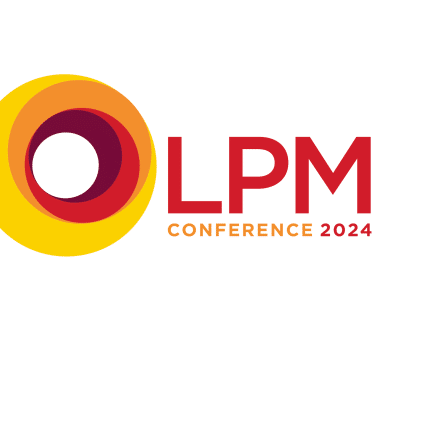
How to build a successful brand identity
Identifying your clients, being consistent with your messaging and sharing useful content can help you attract prospects. Be brave and don’t be afraid to upset the status quo, says John Wallace, managing director and head of real estate at Ridgemont
For some law firms it is necessary to improve or change their brand particularly following a merger or acquisition. This risks loss of brand “equity”, confusing prospects and clients and can be met with resistance internally.
However, getting this right can be difficult for SME legal businesses. There are competing demands on the partnership, and associates do not have the time to look up from their desks. Marketing departments are restricted by cautious, conservative partnerships, often reluctant to upset the status quo, resulting in uninteresting content and branding. It is even more difficult for a reluctant partnership to narrow the scope of its services and to specialise in a particular sector, being seen as limiting revenue streams.
Having a consistent, interesting and “different” voice can be considered a risk. And as we know, partnerships do not like business risk. They think any substantial change risks upsetting that apple cart.
However, the contrary is true. Promoting a specialist, unique brand will be far more successful when competing against much larger, full-service law firms.
Given the above reasoning, the importance of branding to a business is paramount. Without it, a business will struggle to attract clients and build its team. To engage both, a business needs prospects to know, like and trust them. Trying to sell to a prospect before those three pillars are in place will result in failure.
The number of touch points needed to get to that point will depend on whether a prospect is a client referral, or you are marketing to that prospect for the first time. However, strong branding provides those touch points with a clear message that can be consistently communicated on a regular basis.
Firstly, identify your client avatar
The answer is not to immediately engage a web designer to produce an all-singing, all-dancing website. Websites do not ‘sell’words do. Legal businesses need to identify and be clear about their message to be seen, heard and understood.
The starting point for branding is to identify the business’ client avatar. A client avatar is a depiction of your ideal client, providing as much detail as possible as to the make-up of that class of prospects to enable anyone to immediately understand exactly who you are targeting. Everything you do in respect of branding has to talk to this class of person (natural or otherwise).
Once you have identified your client avatar, the next step is to build a tribe of those avatar prospects. You will need to tighten your definition of your client avatar so those you target share your values and are attracted to your message:
Lead a tribe
The greatest barrier to successful branding for SME legal businesses is the fear of leading a tribe and being a voice for shared values. Create a movement built around your vision and be different. Being dissimilar is scary, particularly for those in the legal industry. But without being distinct, you will not stand out.
Be brave
You will need to develop and maintain a consistent voice on current issues within the sector in which you specialise. An inconsistent voice will inevitably weaken your brand. You may even, at times, ostracise the business from your tribe as they become confused about what they perceive to be your values and they may depart to an alternative brand with a strong, more consistent voice.
If your tribe is confused by your branding, they may misunderstand where you are in the market or simply not see you.
How to build authority, credibility and provoke thought
So, you have identified your avatar prospect and are focused purely on conveying your message to those people. You now need to build authority, credibility and provoke thought. You can do this using “authority marketing”. This requires that you establish yourself as an “authority” in a particular field. You produce free, engaging and educational content that deals with your prospects’ common queries and hopefully, to some degree at least, enables them to help themselves. Gradually your brand becomes synonymous with its specialism and when someone in your tribe has an issue they need help with, who are they going to call? You. Alongside this, you will need to be seen in the right places, sponsor industry events and be quoted in industry magazines and national press.
Ridgemont has been prolific in its production of high-quality, free educational content. Most of our content is via professionally shot and edited video. We believe that video is an incredibly powerful means of communicating with prospects and clients. It also has the benefit of reaching four times the number of people on LinkedIn than the printed word. All our video content is held on a central education hub on our exciting new website. This enables prospects, clients and strategic partners to have free access to a host of valuable educational content. Some lawyers have told me we are mad to “give away” advice we could otherwise charge for. But I am adamant that where there is generic knowledge that can be conveyed by video, we should provide this expertise on a no-fee basis. Our website and video content have set us apart in our specialist field of construction law.
It is crucial that you maintain brand continuity throughout all touchpoints with prospects. Remember, your brand’s purpose is to build know, like and trust in your business. For you to build trust between you and your tribe, your tribe requires you to be consistent in your messaging, how you communicate your messaging and what your communications look like. The more often you reinforce those elements, the more likely it is that they will be retained. It is said that in order to move a cold prospect to the point at which they are ready to buy, a business will need 50-70 touchpoints with that person. Each of those touch points has to be “on brand”, which is challenging in a world where marketing communications are posted with such haste.
What’s required to uphold your brand
Branding extends beyond your website. It touches upon your telephone scripts, emails, letters, invoices — in fact, everything you do. In that way, everybody in your business is a marketeer. Excellence in the provision of legal advice is insufficient. Everybody needs to perform to the same standard and ensure that they are “on-brand” to enable a business to thrive.
If you are considering changing your branding, if it is not good enough, then making some of the changes suggested in this article may seem like a long and dangerous path. First, you have already recognised that change is necessary. Second, all these things are achievable if broken down into individual tasks and delegated appropriately. For legal business owners, building a brand that attracts prospects is crucial. Failing that, prospects will be attracted to individual lawyers within your business and, restrictive covenants aside, we all know what will happen when they decide to leave.



